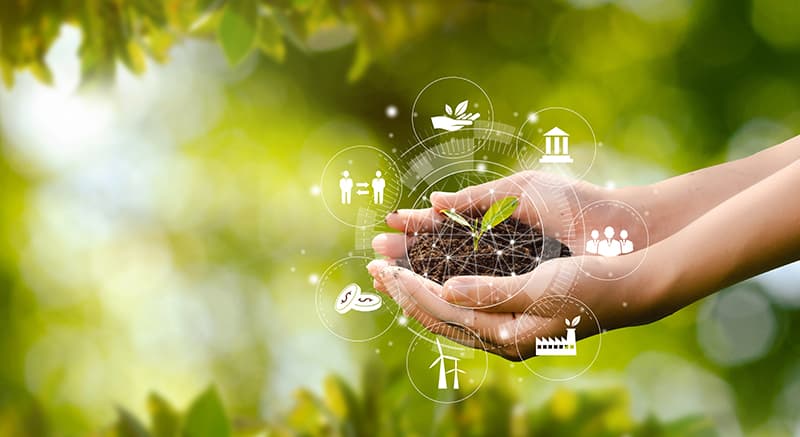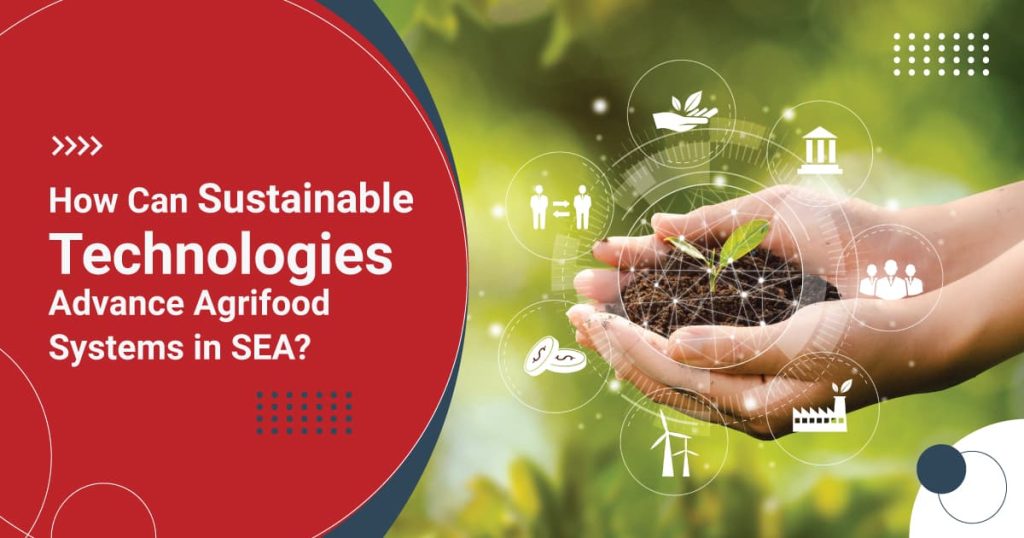In the last decade, the world has been focused on the attention of the economy — data is the new oil, after all. But what about the attention we pay to our food?
Any country or person can own all the data, oil, or money they can obtain, but if our ability to grow food is dramatically compromised, it amounts to very little consequence.
This is why many experts consider agriculture and food (agrifood) production to be one of the most important issues facing humanity. It is not just in terms of feeding the ever-growing population, but also in terms of mitigating and adapting to climate change.
While it is important for all countries to focus on these two issues, it is especially pressing for those in Southeast Asia. The Association of Southeast Asian Nations (ASEAN) is one of the world’s fastest-growing regions, in two senses.
Firstly, the ASEAN population is set to reach 741 million by 2035. Secondly, the ASEAN region is set to be the world’s fourth-largest economy by 2030, shifting millions out of poverty.
What’s more, two-thirds of consumption growth will come from per capita spending, and the remaining third will come from population growth.
This means that, in order to keep up with the demand, the ASEAN food system will have to become drastically more efficient and productive. In hard numbers, this means Southeast Asia is expected to see food demand increase by as much as 40% by 2050.
So, let us have a look at how sustainable technologies and innovation can bolster agrifood systems in Southeast Asia.
Related Read: Sustainability in Singapore: How it Spurs Sustainable Innovation »
What Are Agrifood Systems?

Agrifood systems is an umbrella term that covers:
- The primary production of food and non-food agricultural items
- Food aggregation
- Food storage
- Food distribution
- Food handling
- Food disposal
- Food marketing
Related Read: How Agritech in APAC Helps to Feed Global Needs »
What Are Sustainable Technologies as It Relates to Agrifood?
Broadly speaking, sustainable technologies are those that have a positive environmental or social impact without compromising the ability of future generations to meet their own needs.
In other words, they allow us to meet the needs of the present without compromising the ability of future generations to do the same.
As it relates to agrifood, sustainable technologies can be used in various stages of food production, from farming and fishing to processing and packaging. They can also be used to reduce food waste and increase food security.
Related Read: How Can Singapore Use Agritech for Farms in Southeast Asia? »
What Are the Sustainable Technologies Set to Advance Agrifood in Southeast Asia?
Southeast Asia’s agrifood systems face several problems.
The degradation of natural resources, low efficiency of resource use, agriculture-driven pollution, rural out-migration of the youths, in particular, contribute to plenty of unfallowed land.
There is a range of technologies that are already in use, as well as those in development that aims to make agrifood production more sustainable. Here are a few notable examples:
Download Free eBook: A SEA of Opportunities: Understanding Southeast Asia »
Digitisation of Farms
One of the most important sustainable technologies for agrifood is the digitisation of farms.
This is the process of using IoT (Internet of Things) sensors and software to collect data about every aspect of farm operations, from soil moisture and irrigation to weather patterns and crop yields.
This data can then be analysed to help farmers make more informed decisions about how to run their operations. For example, they can use it to improve irrigation systems, choose the most efficient farming practices, and predict how climate change will impact their crops.
Digitisation of farms can also help farmers to become more sustainable by reducing their reliance on chemical inputs and increasing their use of renewable energy.
Related Read: How Feasible Is Solar Energy in Southeast Asia? »
Drones for Farming
Drones are being used more and more in farming, for tasks such as crop mapping, irrigation, and even crop spraying. They offer a number of advantages over traditional methods, such as being able to cover large areas quickly and without the need for chemicals or water.
They can also be used to collect data about crops, which can be used to improve yields and farm sustainability.
Malaysia-based drone technology startup Aonic (formerly Poladrone) is an example. The company offers pest management solutions for farmers with its point-to-point real-time kinematic spraying and crop spraying drones.
These products enable the efficient and accurate spraying of pesticides.
Related Read: How Singapore Creates the Best Business Environment for a Sustainable Future »
Insect Farming and Alternative Protein Sources
Insects are a sustainable source of protein that is already being consumed by billions of people (mostly in the tropics) around the world. They are also an important part of the diets of many animals, including chickens, pigs, and fish.
Farming insects for animal feed is an efficient way to produce protein, as they require less land, water, and feed than traditional sources such as cattle. They also produce fewer greenhouse gas emissions.
Insects can also be eaten directly by humans, and there are a number of Southeast Asian insect food startups already selling insect-based foods, such as flour made from mealworms.
Agricultural Biotechnology
Agricultural biotechnology is a broad term that covers a range of technologies, including genetically modified (GM) crops, but also includes other techniques such as tissue culture, gene editing, and the use of microorganisms to improve crop yields.
GM crops have been controversial, but there is a growing body of evidence that shows they can be safe and effective, when used properly. They can also help to reduce the use of chemical inputs, and increase resistance to pests and diseases.
Other techniques, such as tissue culture and gene editing, offer the potential to create new varieties of crops that are more resilient to climate change and pests, and that can improve nutrition.
The use of microorganisms to improve crop yields is another promising area of agricultural biotechnology. This involves using beneficial bacteria and fungi to help plants grow better, by increasing their resistance to diseases or improving their nutrient uptake.
A Vital Means for Southeast Asia’s Agrifood Industry
With an ever-growing population and the need to be more efficient in order to meet food demand, sustainable technologies and innovation are crucial to bolstering agrifood systems in Southeast Asia.
Not only will this help to improve food and nutrition security, livelihoods, and environmental sustainability, but it will also allow future generations to continue to thrive in the region.
Contact our team
Posts not found!
FAQs
What are sustainable agrifood systems?
- These systems are able to provide sufficient food security and nutrition for future generations without sacrificing social, economic, or environmental essentials.
What are some problems in agrifood systems that sustainable technology companies can help to solve?
- The sector is plagued by issues like environmental challenges, climate change, labour shortage, and the limited access consumers experience. Businesses can alleviate these problems with technology and innovation.
What is an example of Singapore’s sustainable agritech technology?
- Singapore is known for its urban farms constructed on high-rise buildings that use digital technologies like the Internet of Things (IoT) to produce crops.



